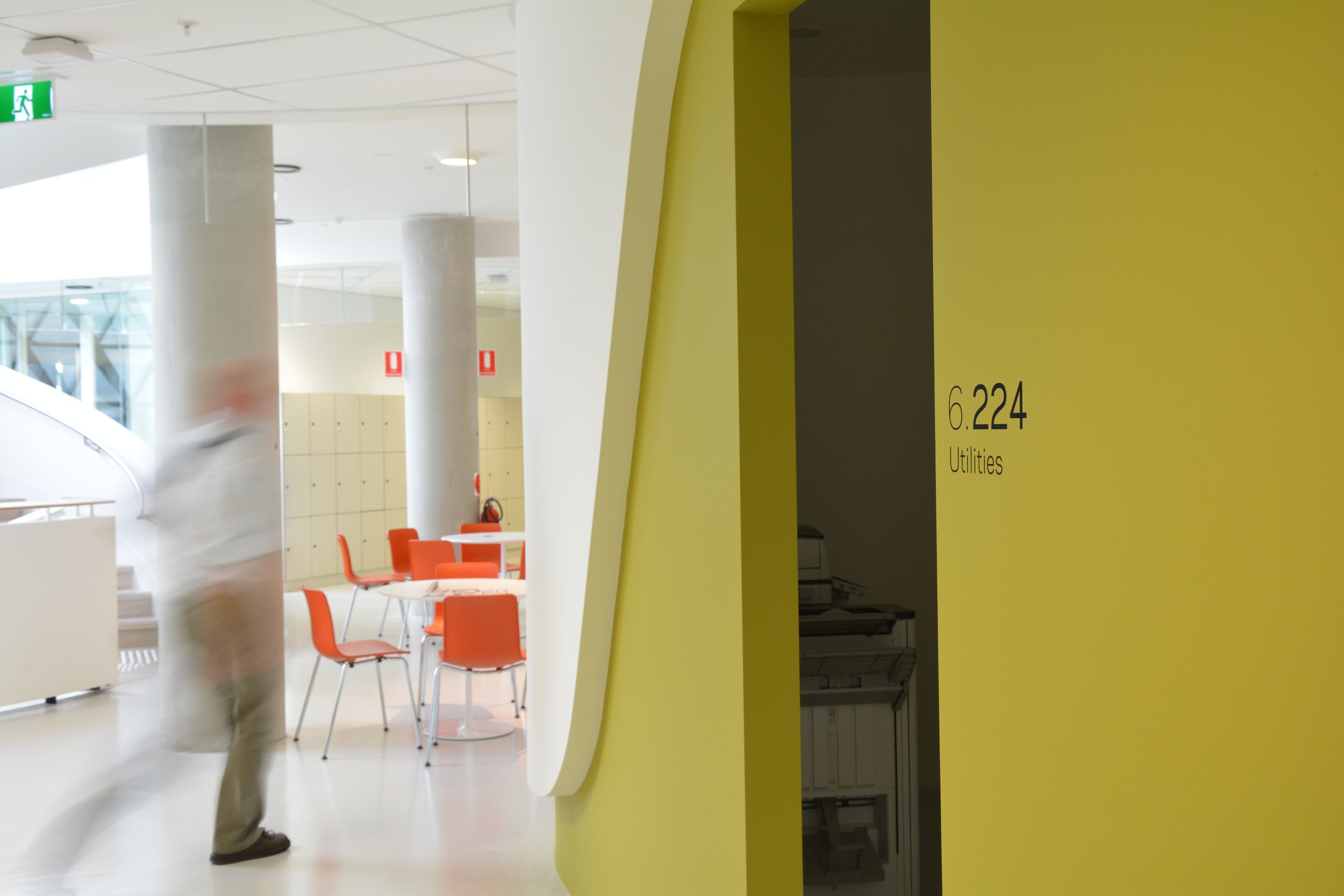Our Thinking: Wayfinder as truth teller
As wayfinding consultants, the role we have to play is one of modern day truthsayer: we have to tell people what we think and what we know, clearly and plainly.
We have to advocate for the user as the wayfinder, and provide them with the right information at the right time. We are tasked with helping people to find their way, even when they are distressed, disorientated or overwhelmed.
We do this work with one core goal in mind – to provide the best possible user experience.
This role comes with an immense amount of responsibility and challenges. For us as wayfinders, the biggest challenge – especially on health projects – is having this vital role be recognised and elevated in projects.
While we don’t just work across health projects, it’s an area we specialise in for numerous reasons. The main reason is a relatively simple one: it’s where we can make a real difference in how people experience their physical journey through a space. Cultivating that particular experience can demonstrably improve people’s lives.
When the architect, the hospital and us have the opportunity to collaborate early on a project, (for example, the VCCC) the space that gets designed is always so much better. You can see it in the projects. The flows are better. The processes that people have to follow are better. It’s something I’d love to see more of.
But getting to this place of easy collaboration isn’t straightforward, or unfortunately, all that common.
Builders have their own KPIs – mostly around profitability, time and marketability of a project. Architects have their own concerns that differ from the builder and, more often than not, the client as well. When I think about what we are striving to achieve with many projects, and the number of parties’ interests we have to balance, it’s truly a miracle that we can complete any of them.
As wayfinding strategists, our main focus is people. We take great care to consider the complete user’s experience – what they see, hear, feel and smell. This focus can come with its positives and drawbacks. We don’t necessarily know why a column needs to be in a certain place, but we know from experience where it could be better placed to steer people in the right direction, minus the unnecessary, overbearing signage.
We also have to deal with a variety of additional pressures, from a competitive industry, from clients and from our own standards. Everyone who works on a project, particularly a highly complex or long-running one, has to make choices. The best projects are those where we can all recognise that and develop something functional and beautiful from there. Ultimately, what we want from any project is to be able to say what we come up with from a specialist perspective and have our clients listen to that. We also want more collaboration, particularly early in a project. That’s where we can have the most impact.
You can listen to this latest episode of Health Design on the Go to learn more about our approach to hospital wayfinding and our vision for the role of the wayfinding strategist.

